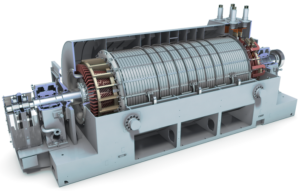The generator market is expected to experience significant growth in the coming years, driven by the increasing demand for uninterrupted power supply in residential, commercial, and industrial applications. The market is expected to grow at a compound annual growth rate (CAGR) of over 6% during the forecast period from 2021 to 2026. The growth is driven by the increasing frequency and severity of power outages caused by natural disasters, aging infrastructure, and growing demand for electricity. Additionally, the growing adoption of renewable energy sources, such as wind and solar, is expected to boost the demand for backup power generators. The increasing adoption of smart grid technology and the development of hybrid generators are also expected to drive the growth of the market in the coming years.
Download Sample Copy of This Report: https://www.factmr.com/connectus/sample?flag=S&rep_id=423
According to Fact.MR, The global generator market is set to surpass a valuation of US$ 32,170.8 mn in 2022 and expected register at a CAGR of 5.5% to reach US$ 54,873.6 mn by the end of 2032.

The Asia-Pacific region is expected to witness the highest growth rate in the generator market due to the increasing demand for electricity and the growing industrial sector in countries such as China, India, and Indonesia. The region is expected to account for a significant share of the global generator market during the forecast period. North America and Europe are also expected to witness significant growth due to the presence of major players in the region and the increasing demand for backup power generators. The key players operating in the generator market include Caterpillar Inc., Cummins Inc., Generac Holdings Inc., Kohler Co., Atlas Copco AB, Briggs & Stratton Corporation, and Wärtsilä Corporation. These players are focusing on strategic partnerships, mergers and acquisitions, and product innovations to expand their market presence and cater to the growing demand for generators.
What’s Driving Demand for Generators?
The demand for generators is being driven by several factors, including the increasing frequency and severity of natural disasters and power outages. With climate change leading to more extreme weather events, such as hurricanes, tornadoes, and wildfires, there is a growing need for reliable backup power sources to ensure that critical infrastructure, such as hospitals and data centers, can continue to function during power outages. Additionally, aging power infrastructure in many countries has increased the risk of power outages, leading to an increased demand for generators. Furthermore, with the growing adoption of renewable energy sources, such as solar and wind power, there is a need for backup power sources to provide reliable power during periods of low wind or sunlight.

Another factor driving demand for generators is the increasing use of electronic devices and equipment, especially in the commercial and industrial sectors. The reliance on electronic devices for critical operations, such as data processing and communication, has increased the need for backup power sources. In addition, the growth of e-commerce and online businesses has led to an increase in data centers and server farms, which require reliable backup power sources to ensure uninterrupted service. As a result, the demand for generators is expected to continue to grow in the coming years, driven by the increasing need for reliable backup power in a wide range of applications.
How does the Industrial Sector Contribute to the Generator Market?
The industrial sector is a major contributor to the generator market, with a significant demand for reliable backup power sources. Many industries, such as manufacturing, oil and gas, and mining, require continuous power supply to operate critical equipment and machinery. Power outages can cause significant disruptions to these industries, leading to production losses and revenue losses. Therefore, the installation of backup generators is a critical component of their business continuity plans. Additionally, as the demand for electricity continues to grow, many industrial facilities are looking to reduce their reliance on the grid by investing in on-site power generation through the installation of generators.
Furthermore, the industrial sector is also driving innovation in the generator market. Many industrial facilities are investing in hybrid generators that combine traditional fossil fuel-based generators with renewable energy sources, such as solar and wind power. These hybrid generators offer several benefits, such as reduced emissions, lower operating costs, and increased energy efficiency. Additionally, the increasing adoption of smart grid technology and the Internet of Things (IoT) in the industrial sector is driving the development of smart generators that can be remotely monitored and controlled, providing real-time data on performance and maintenance requirements. As a result, the industrial sector is expected to remain a key driver of growth and innovation in the generator market in the coming years.